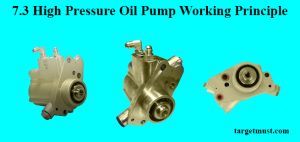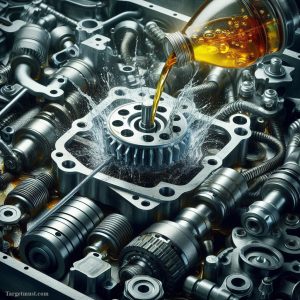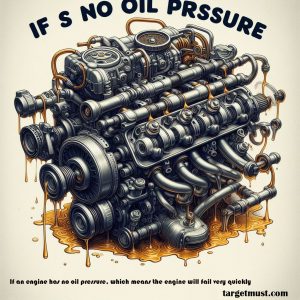The Humble Hero Between Your Wheels – The Importance of Your Oil Pump Assembly
How does the engine oil pump work We’ve all heard that oil is the lifeblood of an engine, but have you ever stopped to think about what’s responsible for circulating that precious fluid? It’s the oft-overlooked oil pump assembly – an unsung hero that works tirelessly behind the scenes to keep your engine healthy. In this post, I’ll take a deeper look at this crucial component and share some tips for keeping it in tip-top shape.
Components of an Oil Pump Assembly How does the engine oil pump work
At its most basic level, an oil pump assembly consists of just a few key parts – a pump body, a pump rotor or gears, and a pump cover. But within this simplicity lies the power to move gallons of oil through your engine with each revolution of the crankshaft.
The pump body forms the main housing and contains the inner workings. Mounted inside is the driven gear, which engages with teeth on the crankshaft or camshaft to turn the rotor or gears. These rotating elements are what actually pump the oil, drawing it in through the inlet and pushing it out under pressure through the outlet.
Seals ensure no oil leaks out where it shouldn’t. And the cover plate, as the name suggests, covers and encloses the entire assembly. Other optional extras can include relief valves, pick-up tubes, and screen filters – but the core elements are the body, gears, and cover.
Types of Oil Pump Assemblies
There are a few different designs for oil pumps, with the most common being:
Gear pumps – These use intermeshing gears rather than a rotor to pump the oil. They tend to be more durable but produce less pressure.
Gerotor pumps – A stepped rotor turning inside an eccentric housing is the pumping mechanism in these. They provide higher pressures than gear pumps.
Internal rotor pumps – Found in many modern engines, these feature a single rotating inner rotor turning inside a fixed outer ring to draw and push out oil.
Your specific vehicle and engine type will dictate which style is installed, but they all operate on the same basic principles to fulfill that vital duty of circulating engine oil.
How does the engine oil pump work
The process is beautifully simple. As the engine runs, the crankshaft or camshaft turns the rotor or gears inside the pump body. This causes a drop in pressure on one side, drawing oil in from the pickup tube connected to the sump or oil pan.
The rotating parts then squeeze and pump this oil out under pressure through the outlet port and into the engine’s galleries, jets, and passages where it’s distributed to vital components like the camshaft, lifters, and of course the main bearings.
From there, the oil is sprayed onto metal contacting surfaces to lubricate and cool them. It also cleans by flushing away contaminants before draining back to the sump through oil return holes ready to start its journey again.
All in all, a well-designed oil pump can complete this cycle dozens of times per minute, constantly refreshing the supply of fresh lubricant being pumped through the engine. It’s a beautiful symphony of moving parts keeping your motor singing in perfect tune.
Common Issues and Troubleshooting Tips
No component is immune to wear, and over time and miles an oil pump can begin to falter.
Low oil pressure – If the gauge suddenly drops or the warning light comes on, it’s a sign of pump failure.
Oil leaks – Check for weeps around seals that could point to wear. A major leak calls for pump replacement.
Noise – A knocking, whining or other unusual noise from the timing cover area may mean it’s time for a new pump.
Hard starting – A weak pump struggling to circulate oil properly can cause cranking issues.
Premature wear – An underperforming pump leads to a lack of lubrication and accelerated component degradation.
The first step if issues are suspected is usually an oil pressure test. Replacing the pump is often the cure, but first consider checking for obstructed pickup screens or lines, worn bearings in the drive system, or air in the oil that can also cause pressure drops.
Maintenance and Care for an Oil Pump Assembly (How does the engine oil pump work)
To keep your trusty oil pump soldiering on strong for as long as possible, focus on maintenance best practices like:
- Change the oil and filter regularly as directed. This removes sludge and keeps the pump swimming in clean lubricant.
- Inspect oil regularly and top up between changes if needed. Running low promotes wear.
- Use only the viscosity and type of oil recommended by the manufacturer.
- Listen for changes during regular engine checks. Catch problems early.
Conclusion
While often overlooked, the oil pump assembly plays a vital role in maintaining engine health through its diligent work circulating life-giving oil. By understanding its components and function, catching issues early, and providing regular maintenance TLC, you can keep your trusty pump soldiering on for many miles to come. Never underestimate the importance of this humble hero between your wheels!
FAQ Frequently Asked Question
What is an oil pump assembly?
The oil pump assembly is a component in an engine that circulates engine oil to lubricate and cool internal parts. It draws oil from the oil pan and pumps it under pressure to the rest of the engine.
What are the main parts of an oil pump assembly?
The main parts are the pump body, pump rotor or gears, and pump cover. The pump body houses the internal parts, the rotor or gears rotate to draw in and pump out oil, and the cover seals it all in. Seals and optional extras like filters can also be included.
What types of oil pump assemblies are common?
The main types are gear pumps, gerotor pumps, and internal rotor pumps. Gear pumps use meshing gears, gerotor pumps use an eccentric rotor in a housing, and internal rotor pumps feature a single rotating inner rotor.
How does an oil pump assembly work?
It works by using the crankshaft or camshaft to turn the internal rotor or gears. This draws oil in through low pressure and pushes it out under pressure to circulate through the engine before draining back to the sump.
What are some common oil pump problems?
Low oil pressure, oil leaks, noise, hard starting, and premature wear can all point to issues. Low pressure is a main sign it needs replacing.
How do you test an oil pump?
An oil pressure test is usually the first step to diagnose problems. This checks if it is maintaining the proper pressure specifications.
What maintenance is needed for an oil pump?
Regular oil and filter changes, inspecting for leaks or changes during engine checks, flushing away sludge buildup, and replacing it if any issues arise are key.
When should you upgrade an oil pump?
For most street vehicles the stock pump is fine, but performance engines generating high horsepower may require larger pumps for sufficient flow capacity.
What are some top oil pump brands?
Popular brands include Melling, ARP, Scat, Moroso, Canton, and Federal Mogul. Melling is a good basic option while ARP and Canton are top-tier for racing applications.
How often should an oil pump be replaced?
Most last the life of the engine with proper maintenance, but it’s best to replace one at the first sign of trouble rather than risking total failure. Catching issues early extends its lifespan.





